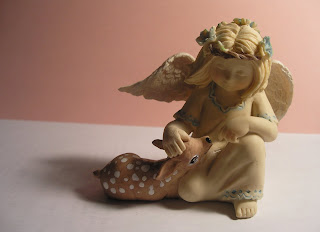
Some time ago, I purchased these small
canvas boards. I bought so many of them
they turned out to be 35 cents apiece!
They were going to be for my 4 x 6 inch
daily paintings. But they were not smooth
enough, and even lumpy in places.
So they took on a new life and I have used
them to demonstrate various techniques to
my students.
This is a really good use for them. When
you are going to use a color palette that
you are not familiar with, make a sample
on a small board like this and keep it for
reference as you paint. Mix white with each of
the three primaries to see how they look going
lighter and lighter. Then mix the secondary
colors under them. The last thing to do is
mix the grey these primaries will make, and
add a little white. And then mix the same
primaries to get your brown, also adding a
bit of white.
Why is this important? Well some primary
colors that you might use will not mix the
secondary colors you may be used to getting.
In the above example, because the primary
yellow is lemon yellow, it's paleness will not
get you a powerful green or orange. Having
made such a sample, you won't be in for
a surprise!



























